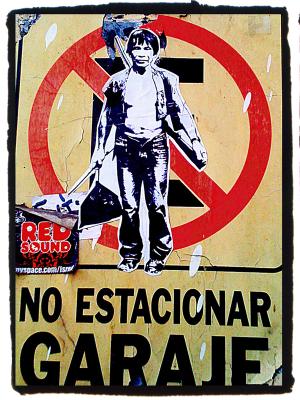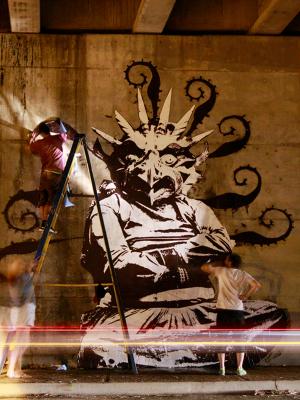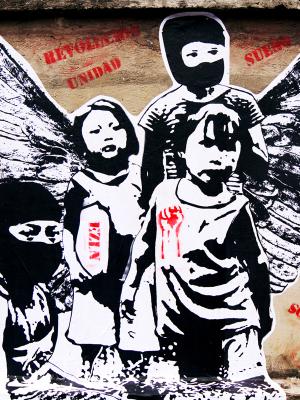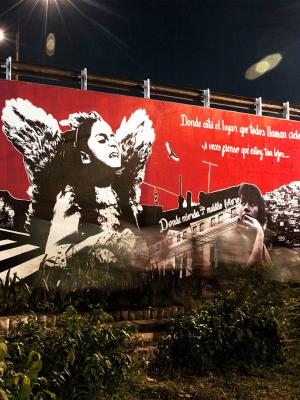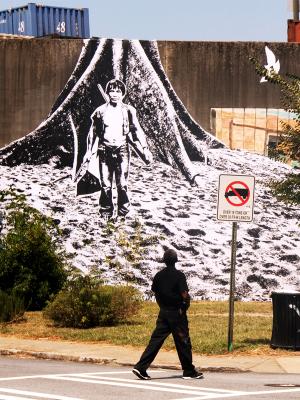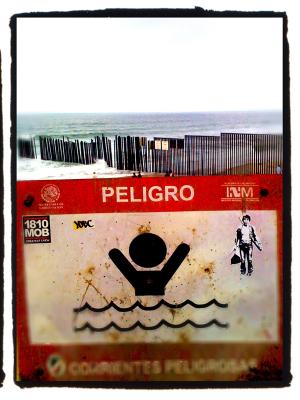interventions in lima
marco saldaña
interview with i.t.a.
check the marco saldaña gallery
it’s an honour to welcome you to powder, marco saldaña. when one dedicates his art to speak out for the disenfranchised it is truly a great deed.
when you see your pieces they instantly speak politically to the viewer. i’d like to ask you what are the main political issues that you deal with and why these issues are important to you?
I ve always taken street art as an opportunity to express my political position about what’s happening in my city. Art and culture have always been recognized as something for the elite, for galleries and museums. So I figured out that if I made street art I could have a more democratic and open dialogue with people. I think that more than the matters I talk about, the most political thing about my work is the fact that I intervene in public spaces, the action itself, so then, the result goes to a secondary level. I mean regardless whether the piece is good or not or if it’s beautiful or ugly, the most important thing is the fact that I use public places to make art.
The subjects I work with are always linked to social matters that have a political aspect, mostly they speak about culture and identity recognition in a city that has followed European and American patterns of progress and culture for a very long time.
when your developing a new work, where does your inspiration come from?
My inspiration comes from the reality and the social aspects of the places where I live and travel to, photography is an ally that allows me to see and interpret the world around me. I’m also inspired by what I read, music and people around me.
you work with many different materials. one of the main ones is the wheat-paste poster. what is the process you undertake to design these works?
The process is essentially photographic; I use printed pieces of paper in large format, then join and stick them together. I do a sort of mathematical calculation and design for specific site.
the images you use, do you take all the photographs yourself? when you do take the photographs, where do you find your subjects? do you use models?
Yes, most of them are my photos. I usually find the subjects doing some research and field work.
I never use models. I prefer to have a spontaneous relationship with the subject; get to know them, gain their trust, etc. Sometimes I’ve used photographic material from the archives, for example, I’ve worked with the photos of a photographer that passed away long time ago called Daniel Pajuelo, as sort of a homage. I used his most representative photos together with my images and I made a large scale collage on the streets for the Biennale of photography in Lima.
how do you choose the locations and walls that you use as your canvas? is there anything you specifically look for in a location?
I like to work on surfaces with volume and texture. I look for normal walls with no particular meaning, but lately I’ve been looking for urban structures with a different shape that suggest an idea. What I do is continue the dialogue, reinterpretate the selected space and make the piece unique when placed on a determinate building where there’s no place for any other proposal, like in “Ojos Shipibos”.
what led you down the road to become an artist marco?
I had no choice, that’s the only thing I can do.
who are your influences both artistically and politically?
I’m from the left wing and I consider that my work and where I live is a result of it. I like to do art that has something to say more than satisfying my ego as an artist. Art is a measure of society that works as a reflection and as a possibility of positive change for people and society.
have you ever been in trouble with the law in peru when creating your artworks in the streets?
Not really, maybe I had some trouble with the police, but always manageable situations. Working with the wheat-paste technique is less risky than working with a spray can doing graffiti. Generally, since my work is in large format and it can take several hours or even days, I ask for permission beforehand.
However doing this without permission has a risk that I like, I believe that in those cases taking to the streets is more important than the result that a piece can suggest and that is the political action.
you’ve worked in many countries outside of peru. which countries did you enjoy working in the most and why?
I enjoy working everywhere, but mostly in Mexico. The first time I went there I was really impressed with the country, both culturally and historically. It’s very similar to Perú. There’s a lot of resources and social problems as well. It’s a very inspiring country and it has a lot of things to report and talk about through art. It’s nature is also fascinating.
what would you say the main message is that marco saldaña is trying to convey through his art?
My work speaks a lot about identity. It tries to reflect on the conditions of immigrants, the racial mixing process, the adaptation process in determinate urban environments. There’s some explicit content in my work but there’s some other things that have their own spontaneous meaning. I think that the fact that art has multiple meanings depending on the context or the point of view is the real value. Street art gives you a lot of possibilities.
you live in peru, a truly beautiful country. what was it like to grow up in peru and what are the main issues that the country is facing at the moment?
Growing up in Peru has always been amazing, the culture and the nature is fascinating. The principal problems like in most Latin American countries are the antagonism between the social classes. We are living in a period of economical changes, we are getting further from poverty, however, there is a lot of social gaps that are difficult to get rid of. Violence is a very big problem and in some countries the government’s corruption is shameless. So I consider it really important to do some political work through art, but in a good sense. Here in Perú politics are always linked to corruption, we have to change that way of seeing and doing things. We are the new generation and we are trying to change things through cultural activism and improving our collectivity.
marco, thank you so much for speaking with us here at powder. as i said before your work is so powerful and we hope to look you up in peru next time we are in town.
check the marco saldaña site
